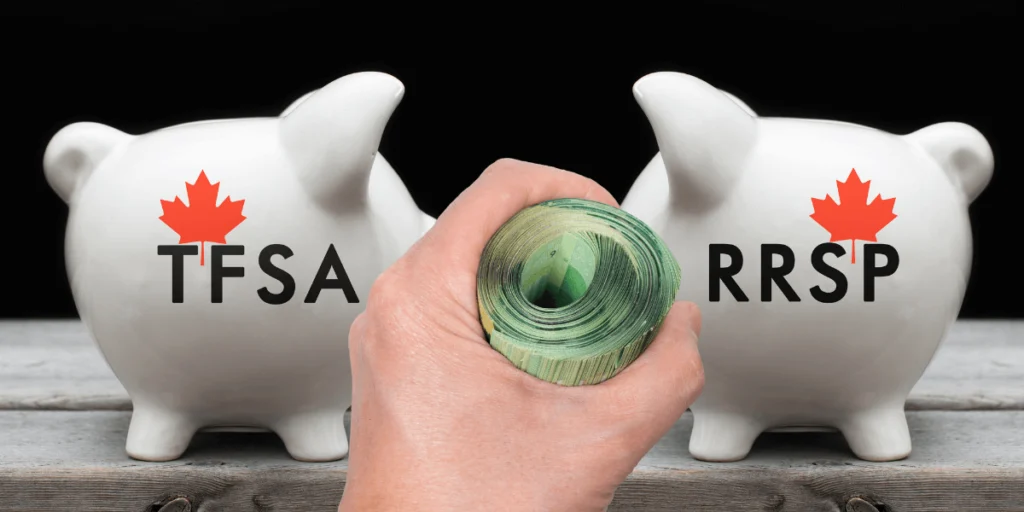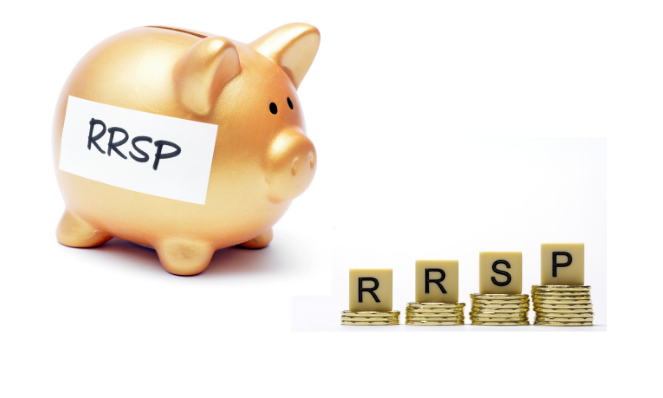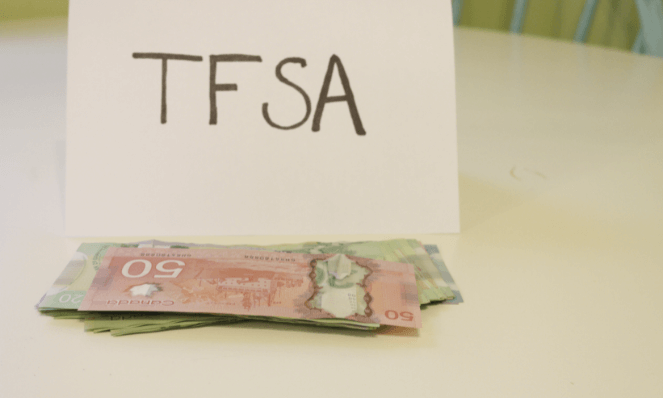

Matthew Cheema
RRSP vs TFSA: Which is better option?
Questions we hear all the time, from all different kinds of people.
- Should I max out my TFSA first and use RRSPs later?
- Is RRSP a better investment vehicle for tax savings?
- Which one is better for saving for a house?
- Which one is better for saving for retirement?
- Are RRSPs good for young people?
- Which account is better for short term investing?
The debate is never-ending, and the truth is like most things in life there is no “one size fits all” answer that is the bread and butter formula to your financial goals. The RRSP and TFSA both have unique characteristics that define them when used correctly, can be advantageous to the investor.
Before diving into the advantages and disadvantages of the RRSP and TFSA, it may be helpful to first understand yourself and your own investment strategy on a deeper, more clear level. What I’ve found with many of our clients is that if they don’t know exactly what their intentions are with investing, they can easily fall into the trap of overthinking and overwhelm when it comes to deciding what their next best investment strategy is.
It’s best to start with the end in mind. To have a clear understanding of where you want to be, and letting that vision guide you in making your day-to-day financial decisions, so that you can more easily tell if a certain account or strategy is in alignment with your big picture goal.
I’ve put together a list of 8 prompts that I encourage you to ponder on and keep in mind as you make your way through the nitty gritty parts of this blog on whether you should be taking a dive into the RRSP, TFSA, or both…
- Where would I like to be financially in 5 years? 10 years? 20? Retirement?
- What kind of lifestyle am I looking to live?
- How would I rate my current investment knowledge?
- What is my risk tolerance when investing?
- What is my investing preference? Do I like having a money manager? Letting my money sit on an index? Or investing myself?
- Where do I see my career going and how much can I expect my income to increase over time?
- What is my current tax bracket?
- What short and long term financial goals am I looking to achieve?
Now that we’ve taken some time to get to know ourselves on a deeper level financially, let’s bring some of those insights with us as we begin to explore these different accounts and possibilities together.
What is an RRSP?
An RRSP is a registered investment account that lets you save for your retirement while deferring taxes on your investment earnings. It works as a tax shelter for the money that stays inside of the account, meaning money can be invested and grown within the RRSP, and it will not be subject to any taxes as long as it stays within the RRSP.

An RRSP is also known as a tax-deferred account, meaning the contributions you make into your RRSP can be deducted from your taxable income. This is notably advantageous for employees who are in a higher tax bracket because if they are paying a substantial amount of tax to the government from their income, they can use RRSPs to receive a portion of those taxes back to keep for themselves (who doesn’t like paying less tax right?). The tax deduction rule works for everyone of course, however it will be more noticeable and advantageous to those who are in higher tax brackets.
Now what if I want to pull money out of my RRSP? What happens then? Great question. And this is where you really want to keep in mind those questions we talked about before on what your intentions are with investing and why/when you would need access to some of this money.
Generally speaking, if you want to withdraw money from your RRSP, you will be required to pay capital gains tax on the withdrawn funds. With capital gains, 50% of the gains are paid out tax-free to you, while the other 50% are subject to tax based on your current tax bracket. Pay close attention here. Here is where the RRSP can become advantageous, or a big disadvantage.
Let’s say you’re in the 20% employment tax bracket currently. That means the tax deductions you will receive back from the government are based on the 20% tax bracket you’re in. But let’s say you know that in 3 years from now you’re going to be in a higher position with your company, earning a greater income, therefore in a higher tax bracket. So let’s say your tax bracket moves up to 30%. If you wanted to withdraw money from your RRSP at that time then you’re going to be paying tax at a higher tax bracket than what you were deducting from in the past.
The whole point of the RRSP is to defer tax now so that we can pay less of it later. But if you’re planning to access that money in the shorter term and chances are that you’re going to be in a higher tax bracket than you are today, you might want to consider if that’s the right move.
There’s 2 exceptions to this rule, however, one of which we teach our clients how to take advantage of all the time. There’s actually a way you can withdraw money out of your RRSP completely tax free, and that’s if you’re using the money to buy your first home (HBP). With this exception you’re able to withdraw up to $35,000 from your RRSP tax-free (assuming you meet the eligibility requirements) to use towards the purchase of your home. You are required however to put the same amount of money back into your RRSP within 15 years otherwise you will be subject to paying tax on the money you withdrew for your home purchase.
The second way you can withdraw funds from your RRSP tax-free is through the lifelong learning plan program (LLP). If you meet the eligibility requirements, you can withdraw up to $10,000 per calendar year from your RRSP towards a post secondary education that you’re pursuing. With the LLP, you are also required to pay back the money you withdraw tax-free, and you have up to 10 years to do so.
What is a TFSA?
A TFSA, also known as a tax-free savings account, isn’t like a typical “savings account” that you have opened with the bank. The whole point of a TFSA is to invest and grow your money to its greatest potential to take advantage of the no taxes you need to pay on your gains.

It’s also a registered account like an RRSP, however there are some key differences. For starters, TFSA contribution limits work differently. Instead of making them subject to an individual’s income, the government decides each year what the contribution limit will be and everyone who is eligible to have a TFSA will share that same contribution limit. In 2022 the contribution limit is $6,000 (plus any unused room you have or withdrawal room from the past).
The TFSA account was created in 2009, and individuals in Canada who were 18 years and older at the time (some provinces require you to be 19) were eligible to open an account. Every year since 2009 that an individual has been 18 years old, they are able to use the total amount of contribution room available for the combined years.
Similarly with an RRSP, money can be invested inside a TFSA, it can grow, and you can pull money out to use it as you wish. The huge difference however with a TFSA, is you can pull money out at any time, for any purpose, without having to pay any taxes or fees. No catch! That’s right, unlike the RRSP where you have to pay taxes on your withdrawals there are no taxes at all when it comes to a TFSA. That means, hypothetically speaking, that you could turn $5,000 into $100,000 inside your TFSA (I know many people who have) and pull out that $100,000 completely tax-free.
It’s that simple! Every year you are granted more contribution room, and whatever amount you decide to pull out of your TFSA this year, next year you will be able to deposit that same amount back into the account plus the new years contribution room as well. So if you take that $5,000 to $100,000 example I used, if you took that $100,000 out of your TFSA this year, next year you would be able to put in $100,000 more plus that year’s contribution level.
Well, if you’re saying I can do all that with a TFSA, why wouldn’t I put all my money into that instead? Good question. The attractive aspect of the TFSA is the flexibility it provides, the tax-free growth, and the tax-free withdrawals, and there’s no doubt that it’s an account that people should take advantage of. Should it be the only account they use? Definitely not. Because diversity is the key to building wealth, and you want to be able to take advantage of the different benefits of other investment vehicles out there.
RRSP vs TFSA: Pros & Cons
Both the RRSP and TFSA carry special advantages in their holsters. While our company helps many of our clients get equipped with both accounts, we believe it’s important to create awareness for what type of investor would benefit from either account more.
Let’s start with the RRSP. The pros of an RRSP are the tax deductions off your income, the tax deferred growth, and ultimately paying less tax on your withdrawals when you reach retirement time and your income tax bracket falls dramatically. For someone who makes a good income, pays a decent amount of tax, has retirement as a big goal for them in the future and doesn’t really want to touch their money until then, an RRSP is a great option to take advantage of.
Who we normally wouldn’t recommend an RRSP to is someone who doesn’t want to put their money away and not touch it until retirement, or someone who wants to access their investments to use for other financial goals and reasons. This can defeat the purpose of the RRSP because of the taxes on withdrawals, and so we would usually recommend taking advantage of other investment vehicles.
Now with the TFSA. The pros of a TFSA are the tax-free growth, tax-free withdrawals at any time, and the flexibility. For someone who wants to build tax-free wealth, invest their money and keep all of it, and access it at any time for whatever reason they see fit (without paying taxes), the TFSA is the way to go.
TFSA is great for those who have other financial goals in mind other than retirement; whether it’s to buy properties, start businesses, invest more, etc. There’s really no downside when it comes to investing in the TFSA so we wouldn’t steer anyone away from investing in a TFSA if investing is something they want to do, because the TFSA is virtually one of the few ways you can invest, grow, and access your money on a tax-free basis in Canada.
Final Comparison
So did we choose the winner?! As you can probably guess, no we did not. What a boring game, I know. However, I really wanted to provide a non-biased perspective on the RRSP and TFSA and highlight the pros and cons and what type of investor may benefit from each account. The important thing to remember is every account serves its unique purpose, and right now there may be an account that’s more attractive to you and your current needs. That may change in the future, which is why it’s always important to be monitoring and adjusting your financial strategy and to work with a professional until you have full control over your finances on your own.
If you’d like to learn more about which vehicle is right for you, or even explore other financial vehicles out there that can help you build and create long-lasting wealth, you can schedule a free consultation with one of our Wealth Specialists for free. Our process is very hands-on and interactive because our mission is to help people empower their personal economies and put the fate of their financial futures back into their own hands. We love to teach and take on new clients, and our partnerships with the top banks and institutions in North America allow us to put together the best and most custom-tailored financial strategies together for each individual’s own unique goals and needs.
Happy Investing
If you want to learn more about these products you can schedule a FREE consultation with one if our wealth strategist.
Schedule NOW!